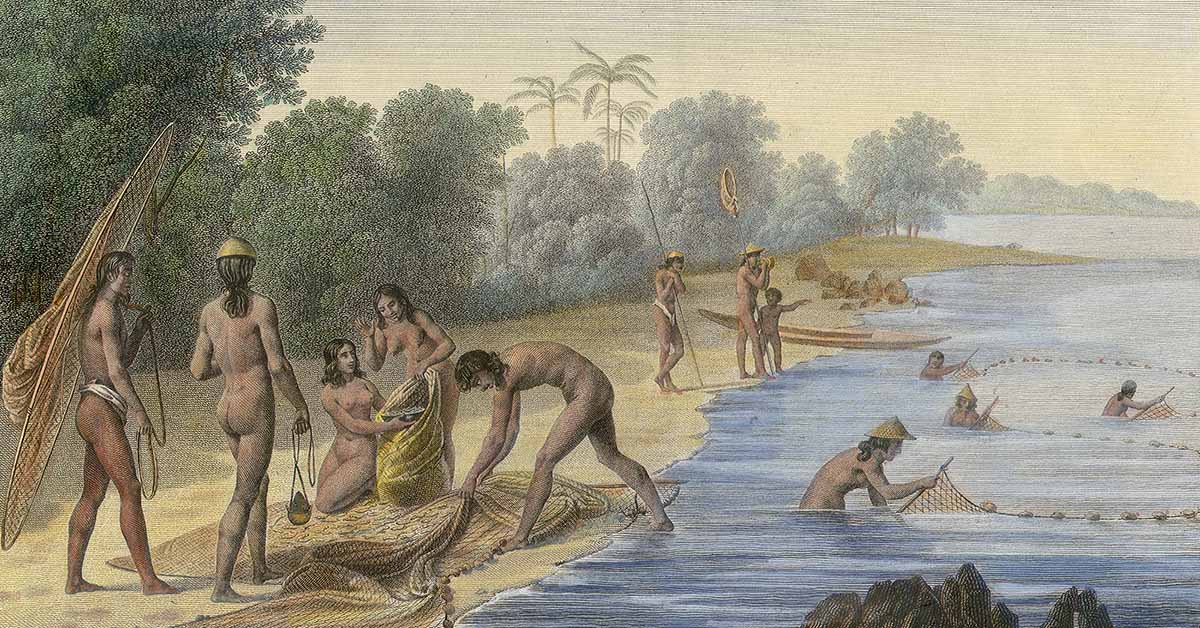Saina: Gender Roles
Table of Contents
Share This

Fishing Scene. Courtesy of the Guam Public Library System.
Roles of elders
Since ancient times, CHamoru/Chamorro society has assigned both distinct and overlapping roles by gender. Both parents participate in family decisions, provide continuing support of their children and subsequent offspring, and pass on knowledge regarding cultural values and family genealogy, obligations and responsibilities.
As CHamorus have shifted from a matrilineal to bilateral society, many gender roles have changed or blurred. In matrilineal societies, children belong to the woman’s clan, in which the mother’s eldest brother is the most important male. Today, fathers and other male elders are likely to teach: fishing, maritime, yard work, ranching, defensive and hunting skills. The father is usually the visible head of the family, responsible for and directing many of its activities. Women, however, in many ways, command the home. Mothers and other female elders are likely to impart: cooking, gardening, washing, cleaning and family income management skills. Females have been responsible for the children’s religious upbringing.
For further reading
Flores, Judy. “Art and Identity in the Mariana Islands: Issues of Reconstructing an Ancient Past.” PhD thesis, University of East Anglia, 1999.
Inafa’ maolek: Chamorro Tradition and Values. The Hale’-ta Series. Hagåtña: Political Status Education Coordinating Commission, 1996.
Poehlman, Joanne. “Culture, Change and Identity Among Chamorro Women of Guam.” PhD diss., University of Minnesota, 1979.
Thompson, Laura M. Guam and Its People. With a Village Journal by Jesus C. Barcinas. 3rd ed. New Jersey: Princeton University Press, 1947.
